5 Ways IT Enables CCUS Operations
When I was in my previous role, CCUS was a major initiative and was featured in the S-1. With the Inflation Reduction Act, other companies are picking up on it too as highlighted by Exxon’s $5 billion purchase of Denbury and their 1300+ miles of Carbon pipeline. In the words of Mugatu from Zoolander, CCUS, is so hot right now.

As a technology exec and a cybersecurity professional, my wheels immediately were churning on how to support our team and trying to get technology efficiency and support to front-and-center approach for sequestering carbon and how to meet the business opportunities and challenges that come with it. While EOR and using carbon for operations has been around a while, the opportunity is incredibly exciting, especially considering that many Carbon Capture projects are considered unique — unique rock, unique carbon emitters, different states, regulation, and challenges…and that’s not even mentioning the Inflation Reduction Act and Federal 45Q credits yet.
I’ll let the other parts of the back office teams handle the tough part of CCUS, finding carbon emitters, permitting and drilling a well, moving the carbon and injecting the carbon, and perhaps the most fun…accounting for it. There are specialty data subscriptions out there which can help identify these industrial producers, but the intent of this blog is to address the IT-technical parts of where IT can help enable the business of Carbon Capture. IT, Data, and Cyber teams, with legacy and current cloud technologies, can immediately add value to CC teams to help enable the business to execute confidently.
In the following sections, we will delve into five key ways IT can bolster the success of CCUS businesses. First…
SCADA and Field Infrastructure
In order to harness the power of modern technology for operational purposes, the company must prioritize the implementation of SCADA and Field Infrastructure. This will ensure the reliable and transparent provision of data to operators, enabling seamless operations and effective decision-making. As of the time of writing, I’m not aware of a fit-for-purpose, out-of-the-box software package built specifically (the closest I’ve found was Sensia) for CCUS, but the SCADA and Field networks are similar to traditional up- and midstream production with a myriad of sensors, PLCs, and meters, thus collaborative conversations are to be had on how to repurpose current SCADA, measurement, and/or historian systems to fit the need of the CCUS Projects to be done. Furthermore, notification policy, alerts, reports, and dashboards will need to be created and leveraged with feedback from the Operational team members to improve the product. Any CCUS implementation should have IT representation in the domains of data, infrastructure, and cybersecurity.
Benefits and ROI are immediate: near real-time data for all industrial systems’ health to optimize operations, enhance safety, and remote management as long as you have the culture tied into utilizing that data.
Cybersecurity Leadership
With IIoT and connected infrastructure being the norm, it also opens up operating challenges from a myriad of risks. I’ve led cybersecurity assessments in which we quickly found 15+ year-old field hardware accessible from the Internet ripe with vulnerabilities and default credentials. Using proper cyber hygiene can meet and exceed regulatory requirements, mitigate risks, and hopefully prevent what was my worst nightmare as a head of Information security in a company with wells and pipes: an external, determined attacker in a field network, pipeline control, or a compressor station. As I talk about in another blog post, the SEC is also poking its head in on boards’ oversight and public company’s cybersecurity programs. Might be a matter of time before the EPA gets aggressive too with Carbon emissions much like they on methane.
Vendor, Software, and Hardware Diligence and Implementation
The choice of vendor, application stack, and hardware can have a significant impact on the success of technical implementations in CCUS businesses. It’s not just about finding a tool or device that meets the minimum requirements; it’s about future-proofing your technology investments, ensuring data compatibility and governance, and making informed decisions that align with your operational and technical strategies. Technology professionals can assist with due diligence in designing the best solution that meets the business requirements while also avoiding vaporware and poorly designed software and technology.
Analytics and Data
The analytics infrastructure serves as the backbone of data-driven decision-making in CCUS operations. It provides the tools and frameworks necessary for managing, analyzing, and visualizing large volumes of data, enabling businesses to gain valuable insights and make informed strategic decisions. Off the top of my head, two low-hanging dashboards and one data science project bring immediate value are below:
Refined Operational Transparency with data reports and dashboards provide transparency by visually representing critical production metrics gathered from remote sensors. They allow real-time tracking of various operational parameters, including but not limited to energy consumption, pressures and injection rates, and operational efficiency. By providing a clear view of these metrics, production dashboards enable operational teams to identify potential issues before they escalate, implement necessary adjustments, and optimize overall performance.
The second dashboard would enhance ERPs and point software solutions. Financial Transparency with dashboards and deports will center on the economic aspects of operations, providing insights into costs, revenues, and financial performance indicators like IRA credits. They allow for tracking and analysis of financial data to ensure the profitability and sustainability of operations. Additionally, they facilitate budgeting, forecasting, and cost management, promoting financial transparency and accountability.
Furthermore, the data created and analyzed will need to be calculated based on contract agreements between the emitter and injector to provide reimbursement or invoices.
Finally, Data Analysis and Predictive Modeling: Data analysis goes beyond providing a historical overview of operations; it can be used to build predictive models that forecast future trends and scenarios. Using a combination of proprietary and external data, historical and current data can feed predictive modeling to optimize the business, address challenges, and drive sustainable growth with operational efficiency. This cannot be done without a solid foundational data plan, data process, security, and especially data governance. More to come on this.
Old School IT Services
Ensuring effective support across diverse domains is paramount for the corporate IT group. This facilitates collaboration between teams such as Geology and Land, as well as accountants managing 45Q tax credits. To meet the business’s expectations, IT must consistently deliver on typical IT service level agreements (SLAs). This includes, but is not limited to:
- Seamless ERP and application integration, encompassing supply chain, procurement, and GL.
- Efficient infrastructure management
- Streamlined data pipelines, ensuring governance and robust infrastructure.
- Technology training and skills development to stay ahead of the curve.
- Knowledge management and collaboration tools.
- Comprehensive IT support and maintenance.
In conclusion, by fostering a culture of collaboration and active engagement among the IT, Cyber, and Data teams, organizations can significantly enhance and optimize their CCUS operations with their invaluable support. Conversely, neglecting their involvement will result in reduced transparency and efficiency.
Having challenges with any of the above? Give Class IV a call. We’d be happy to dig into these challenges with you.

